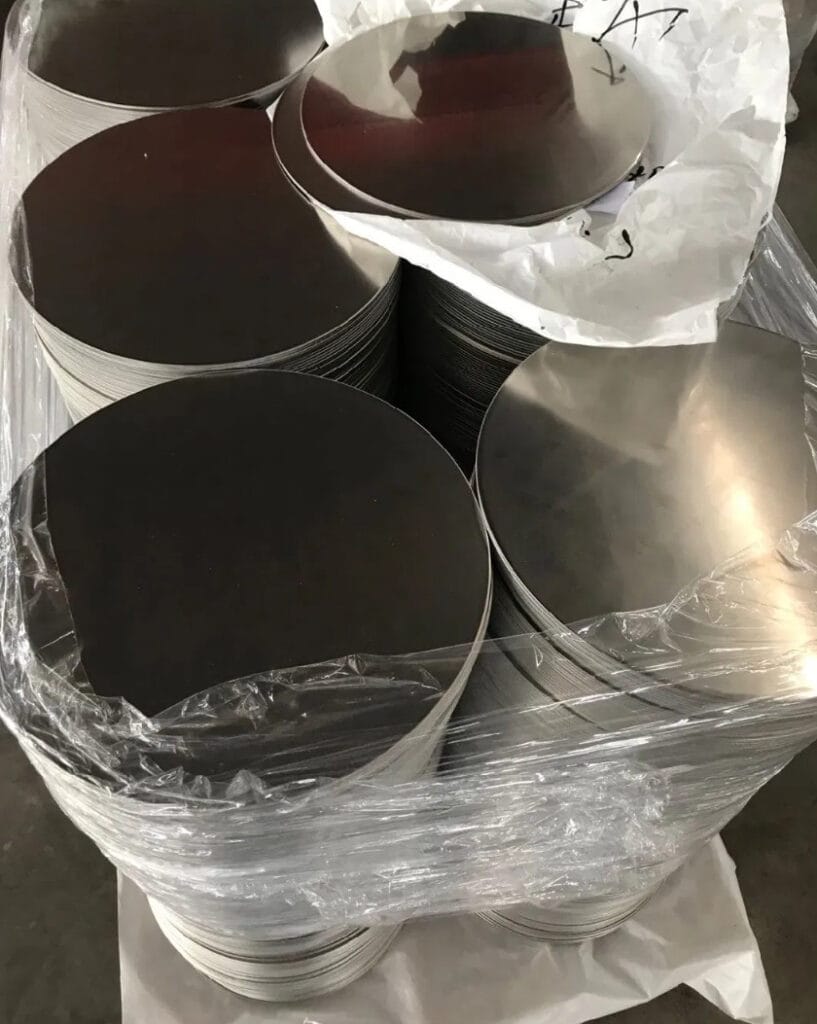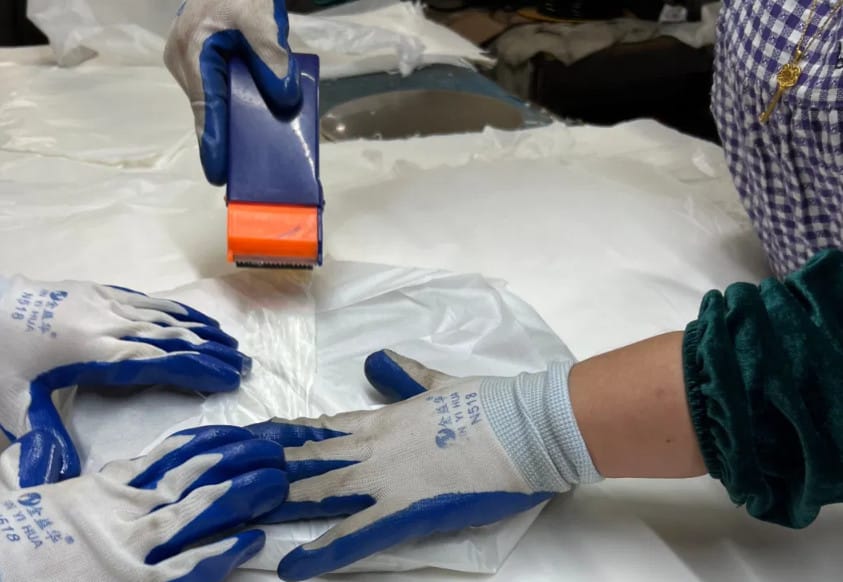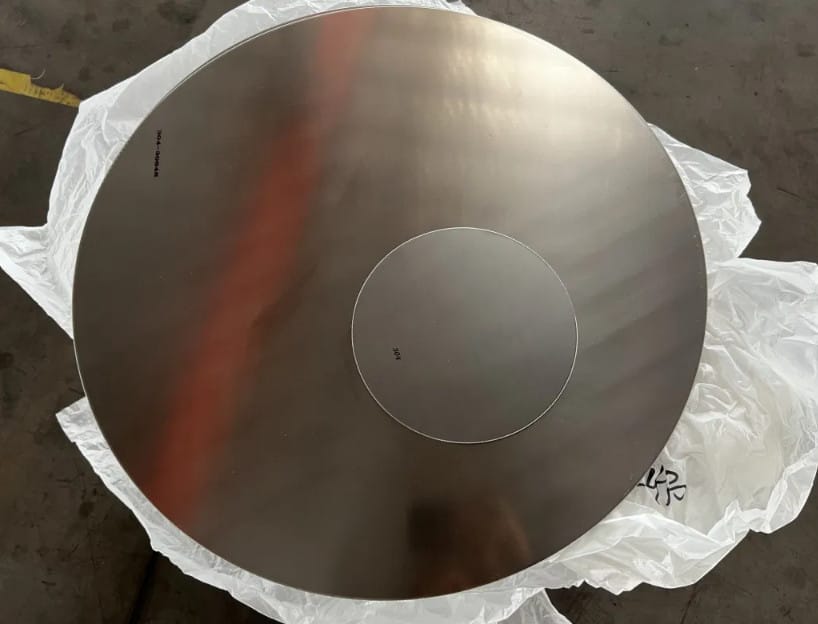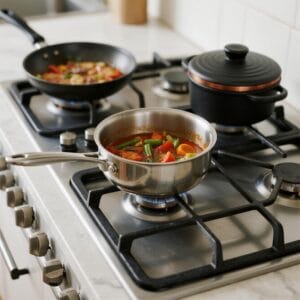Introduction: Meeting Diverse Cookware Demands with Customization
In the cookware industry, one size rarely fits all. Manufacturers must cater to a range of needs, from professional-grade equipment to specialized home kitchen tools. Customization of triply circles—by adjusting their dimensions, composition, and performance features—enables manufacturers to create cookware tailored to specific requirements. But how does customization in triply circles accommodate diverse cookware needs?
Customizing triply circles allows manufacturers to address specific cookware requirements, including size, material composition, heat performance, and design, ensuring optimal functionality and market appeal.
Let’s explore the various ways customization enhances the utility and versatility of triply circles in cookware production.

How Do Diameter and Thickness Customization Meet Size Requirements?
Cookware comes in a wide variety of shapes and sizes, and triply circles need to be tailored to match specific product dimensions.
• Diameter Adjustments: Manufacturers can customize triply circles to suit different cookware types, from small saucepans (16 cm) to large stockpots (50 cm or more).
• Thickness Variations: Adjusting the thickness of the triply material impacts heat distribution, durability, and weight, allowing for specialized cookware, such as lightweight pans or heavy-duty pots.
This level of customization ensures that triply circles can be used across a range of cookware designs, from compact home tools to professional-grade equipment.
How Can Material Composition Be Adjusted for Performance?
The composition of the core and outer layers in triply circles can be modified to achieve specific heat conduction and durability properties.
• Core Materials:
• Aluminum: Offers excellent heat distribution and is lightweight, ideal for general-purpose cookware.
• Copper: Provides superior thermal conductivity for professional-grade cookware requiring precise temperature control.
• Stainless Steel Grades:
• Standard Grades (e.g., 304): For everyday cookware with corrosion resistance and durability.
• High-Performance Grades (e.g., 316): For cookware used in harsh environments, offering enhanced resistance to acidic or salty foods.
Customizing material composition allows manufacturers to tailor cookware for specific cooking tasks, such as searing, simmering, or high-heat applications.
How Does Surface Treatment Enhance Usability?
Customization extends to the surface finish of triply circles, impacting aesthetics, functionality, and maintenance.
• Polished Surfaces: Provide a sleek, professional look and make cleaning easier, enhancing usability for home cooks.
• Textured Finishes: Improve food release or create a more robust appearance for heavy-duty cookware.
• Coating Compatibility: Triply circles can be prepared for non-stick or specialty coatings, catering to consumer preferences for low-fat cooking or easy cleanup.
Surface treatments ensure that the cookware aligns with consumer expectations and branding requirements.
How Does Customization Improve Heat Performance?
By modifying the structure and composition of triply circles, manufacturers can optimize heat performance to meet specific cooking needs.
• Heat Distribution: Adjusting the core material and thickness allows for precise control over heat distribution, ensuring even cooking for delicate recipes.
• Heat Retention: Customization ensures that cookware retains heat efficiently for slow-cooking or simmering dishes.
• Thermal Response: Tailored triply circles can provide faster heat adjustments for tasks like stir-frying or sautéing.
These customizations ensure cookware performs reliably across diverse culinary tasks, from quick heating to prolonged simmering.

How Can Customization Address Weight and Handling Preferences?
Weight and handling are critical factors for both professional chefs and home cooks. Customizing triply circles allows for cookware that meets specific usability requirements.
• Lightweight Designs: Thinner layers or aluminum cores can create cookware that is easy to handle and suitable for home kitchens.
• Heavy-Duty Options: Thicker layers or copper cores provide robust, professional-grade cookware for heavy use in commercial kitchens.
Balancing weight and durability ensures that cookware is functional, user-friendly, and suited to its intended audience.
How Does Customization Meet Niche Market Needs?
Specialized cookware often requires unique features that standard triply circles cannot provide. Customization allows manufacturers to cater to niche markets.
• Induction Compatibility: Customizing the outer stainless steel layer ensures compatibility with induction cooktops.
• Specialty Cookware: Unique shapes, sizes, or features (e.g., woks, griddles, or Dutch ovens) can be created to meet specific culinary demands.
• Eco-Friendly Options: Triply circles can be tailored with sustainable materials or processes to meet environmentally conscious consumer preferences.
These tailored solutions enable manufacturers to stand out in competitive markets by addressing specific consumer needs.
How Does Branding and Design Influence Customization?
Customization of triply circles isn’t just about functionality—it also allows manufacturers to align cookware with brand identity and design preferences.
• Engraved Logos: Circles can be customized with branding elements for premium cookware lines.
• Color Options: Surface treatments and coatings can be tailored to match a brand’s signature style or appeal to consumer aesthetics.
• Specialized Features: Custom shapes, handles, or design elements create unique products that differentiate brands in the marketplace.
These design customizations enhance product appeal and build brand recognition.
Claim: Why Customization Enhances the Utility of Triply Circles
Customization of triply circles accommodates a wide range of cookware needs, including size, material composition, heat performance, and design. By tailoring these features, manufacturers can create cookware that meets specific consumer demands, ensuring functionality, versatility, and market success.
Conclusion: The Role of Customization in Cookware Innovation
Customization of triply circles is essential for meeting the diverse needs of today’s cookware market. By tailoring dimensions, materials, and design features, manufacturers can produce high-performance cookware that caters to a wide range of culinary applications and consumer preferences.
This adaptability allows manufacturers to remain competitive, offering innovative solutions that enhance both cooking performance and user satisfaction, making customized triply cookware a staple in kitchens worldwide.






